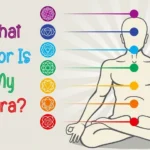Effective communication is not just about the words we speak; it’s also about how we convey our thoughts and feelings through nonverbal cues. Body language, the unspoken language of gestures, expressions, and postures, plays a vital role in shaping our interactions with others. In this blog post, we will explore 10 essential body language secrets that can significantly enhance your communication skills and help you build better connections with people from all walks of life.
Importance of Body Language in Communication
Body language serves as a potent communication tool, complementing and often overshadowing our verbal messages. Research suggests that up to 93% of our communication is nonverbal, making it crucial to pay attention to the signals we transmit. Positive body language can convey confidence, openness, and approachability, while negative cues may inadvertently communicate disinterest or deceit. Being aware of your body language and understanding its impact on others can lead to more successful and authentic interactions.
Key Elements of Nonverbal Communication
To unlock the power of body language, we must grasp its key elements. Posture, gestures, facial expressions, eye contact, handshakes, and proxemics (the use of personal space) all play crucial roles in nonverbal communication. Each element carries its nuances and can either reinforce or contradict the spoken word. For instance, crossed arms might signal defensiveness, while an open stance can express receptiveness. By mastering these elements, you can align your nonverbal cues with your words, ensuring a consistent and persuasive message.
The Power of Facial Expressions

Our faces are windows into our emotions, and facial expressions are a universal language understood across cultures. A genuine smile can instantly create rapport, while a furrowed brow may indicate concern or confusion. When engaging in conversations, be mindful of your facial expressions, as they can set the emotional tone of the interaction. Likewise, being attuned to the facial cues of others can help you gauge their reactions and adjust your communication style accordingly.
Gestures That Enhance Your Message
Gestures like pointing, nodding, and using your hands to emphasize points can add clarity and impact to your verbal communication. However, it’s essential to use gestures in moderation and with cultural sensitivity. Overusing gestures or employing offensive ones may distract from your message or lead to misunderstandings. By using gestures thoughtfully, you can enhance your message’s effectiveness and engage your audience more effectively.
Posture and Its Impact on Perception

Posture not only reflects our physical well-being but also shapes how others perceive us. An upright and confident posture exudes self-assurance and professionalism, while slouching might be interpreted as disinterest or lack of confidence. Moreover, mirroring the posture of others can create a sense of connection and empathy. Becoming mindful of your posture can help you project a positive image and improve your overall communication with others.
In social settings, maintaining an attentive posture is particularly crucial, especially when first impressions matter. For instance, imagine you’re attending a networking event where you’re hoping to establish meaningful connections. Standing tall with your shoulders back and head held high portrays confidence and approachability. It sends a strong signal that you are open to engaging in conversations and building rapport with others.
When in the company of BabylonGirls, their poised and elegant posture perfectly complements the setting. Their sophisticated presence adds an air of refinement to any social occasion, capturing the attention and admiration of those around them. With a keen sense of awareness, BabylonGirls understand the significance of body language in communication and effortlessly embody confidence and grace through their posture.
Understanding Eye Contact and Its Variations

Eyes are known as the windows to the soul, and maintaining appropriate eye contact is essential for effective communication. Sustained eye contact shows attentiveness and sincerity, while avoiding eye contact might be interpreted as discomfort or dishonesty. However, cultural norms play a role in eye contact expectations, and it’s crucial to strike the right balance based on the context and the individual you’re communicating with.
Decoding Handshakes and Their Meanings
Handshakes have been a traditional gesture of greeting and agreement for centuries. A firm handshake can convey confidence and trustworthiness, while a limp one may be seen as weak or insincere. Additionally, some cultures have specific customs surrounding handshakes, such as bowing or not shaking hands at all. Understanding these nuances can help you navigate diverse social settings and create positive impressions.
Using Proxemics to Convey Intimacy or Authority

The concept of proxemics refers to the use of personal space during interactions. Different cultures have varying expectations regarding personal space, and understanding these norms is crucial to avoid making others uncomfortable. The use of proximity can also communicate authority or intimacy; for example, a speaker may stand closer to their audience to establish a connection, or a manager may maintain more distance to signify professionalism.
Mirroring and Building Rapport with Others
Mirroring is a powerful technique that involves subtly imitating the body language of the person you’re communicating with. When done naturally, mirroring can build rapport and establish a sense of connection. However, it’s essential to be subtle and avoid mimicry, as overt mirroring can be off-putting. By matching the pace, gestures, and tone of the person you’re speaking with, you can create a harmonious and comfortable atmosphere for communication.
Detecting Deception Through Body Language
While body language can enhance communication, it can also be a window into deception. Micro-expressions, subtle facial cues that flash across our faces involuntarily, can reveal hidden emotions or intentions. Learning to spot these signs can be beneficial in detecting dishonesty. However, it’s crucial to interpret body language in context and avoid jumping to conclusions based solely on nonverbal cues.
Practicing and Improving Your Nonverbal Skills
Improving your body language takes practice and self-awareness. Consider recording yourself during conversations or presentations to identify areas for improvement. Seek feedback from trusted friends or mentors, and be open to making adjustments. Additionally, observe successful communicators and study their body language techniques. Remember that nonverbal communication is a dynamic skill that evolves, so be patient and consistent in your efforts to enhance your nonverbal prowess.
Conclusion
In conclusion, mastering body language secrets can significantly impact your communication skills and strengthen your connections with others. By understanding the importance of body language, recognizing its key elements, and practicing various nonverbal cues, you can become a more effective and persuasive communicator. Whether in personal relationships, professional settings, or public speaking engagements, harnessing the power of body language can elevate your ability to connect, influence, and thrive in diverse social landscapes. So, embrace the language of gestures and expressions, and embark on a journey of enhanced communication and meaningful connections.









